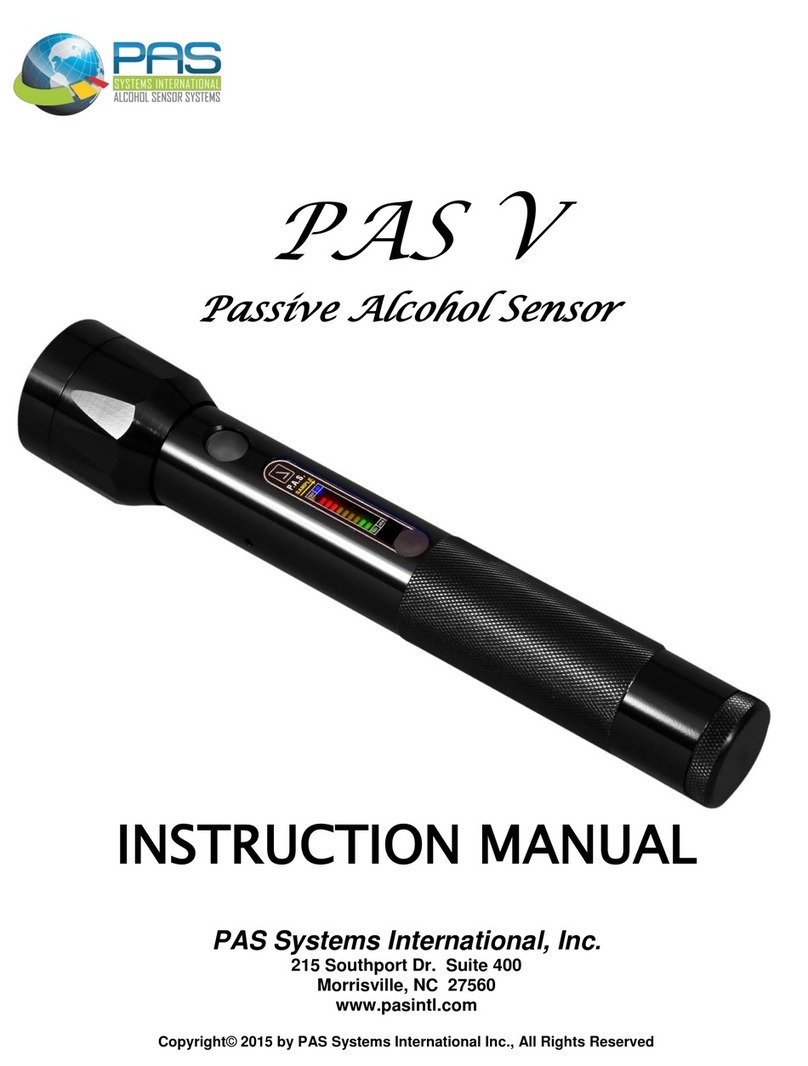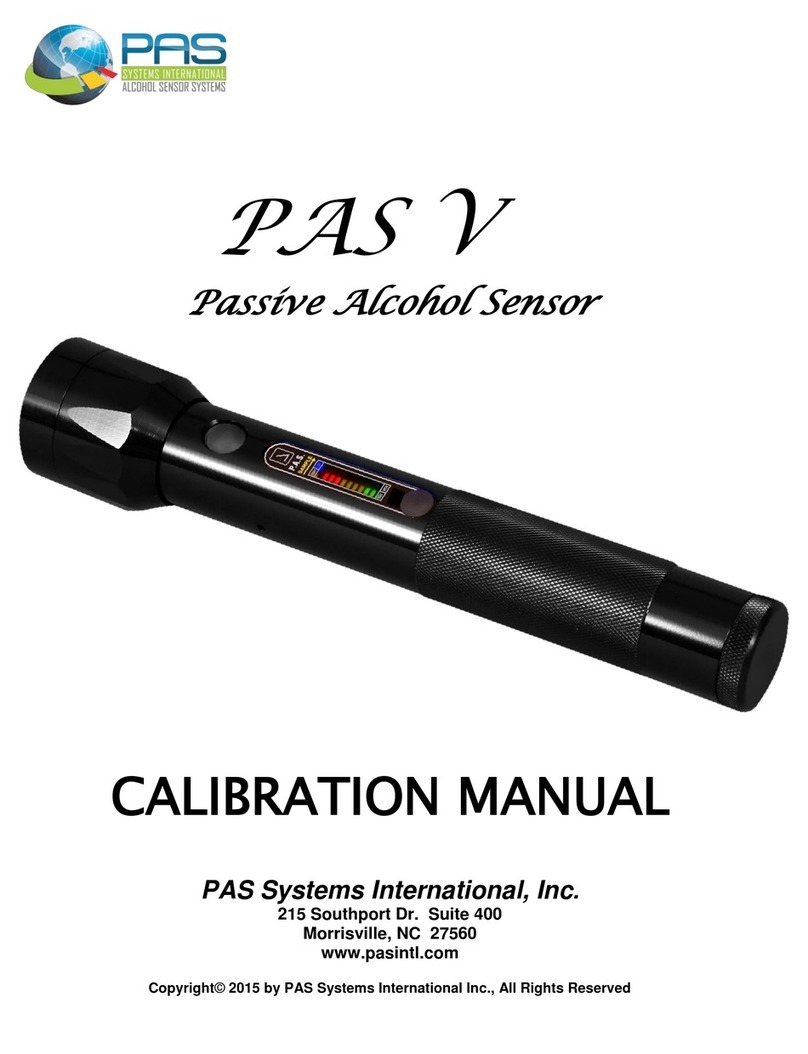Based on extensive experience with law enforcement agencies, corporations and correctional
institutions, it has been found that no single type of instrument can fill every need. As a result, PAS
Systems has developed alcohol analyzers that meet specific requirements.
Law Enforcement and Corrections
The PAS Vr. is designed specifically for use by law enforcement, correctional officers, security
personnel, and schoolofficials. It can beoperated with onehand,leavingthe othercompletelyfree.The
instrument is easy to use, and has been designed to withstand the physical conditions experienced in
operational situations. It is resistant to adverse weather conditions and mechanical shocks.
Industry
The PAS Vr. hasbeen used very successfullyas an alcohol deterrentin industry. Whenusedas arapid
screening device to detect alcohol in human breath, the PAS Vr. will help you decide whether to use an
evidential breath tester (EBT) in individual employee cases. The PAS Vr. is designed for industry and
transportation agencies and complies with the U.S. Department of Transportation requirements for
workplace testing regulations according to 49 CFR, Part 40.
Individuals who have been trained in the administration of screening devices recommend the PAS Vr.
Careful review of this manual will prepare and qualify you for using the PAS Vr. asa reliable andprecise
procedure in the testing of employees for the presence of breath alcohol.
Zero Tolerance
The U. S. Department of Transportation’s National Highway Traffic Safety Administration (NHTSA)
encourages states to enact zero tolerance laws designed to reduce drinkinganddrivingamongyounger
drivers. Such laws should: (a) establish that any measurable amount (.02 maximum) of alcohol in the
blood, breath, or urine of a driverunder the age of 21 would be an “illegal per se” offense; (b) provide for
immediate driver license suspension periods for those under 21 who exceed the applicable breath
alcohol concentration (BrAC) limit.
However, many other situations call for zero tolerance of alcohol. For example, in any correctional
institution alcohol is not allowed, inmate work release programs, in-home incarceration programs,
parolees, and in schools. In drug and alcohol treatment centers and counseling activities, alcohol
consumption must be prohibited and monitored.
The PAS Vr. used in the passive alcohol detectionmode is a safe, cost-effective,andreliablemethodfor
all such applications.
Further guidance, training, or questions regarding this precision instrument system, or its use in
screening subjects for the presence of breath alcohol can be obtained by calling 800-660-SNIF.
2































